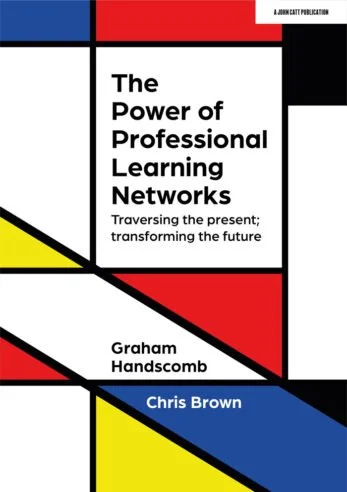The idea of professional learning networks, or PLNs, has been around a long time. So what is there to say about them with regard to teachers’ professional development and wellbeing? The size and scope of this book provides a succinct answer: plenty.
The authors draw on a wide range of research. What especially impressed me is not only that their findings are bang up to date, drawing lessons from the responses to Covid lockdowns, but that they have also delved into research carried out decades ago. Anyone who believes that old research is no longer relevant will discover this book to be a useful rejoinder.
Handscomb and Brown open with a discussion on the power of networking, making the point that what teachers are able to learn is limited by the kind of networks in which they find themselves. Crucially, there are different types of network, and they provide opportunities to do more than share good practice, however defined.
I suspect that this book won’t be on the education secretary’s recommended reading list for schools. (Although such a document doesn’t yet exist, as far as I know, it surely will come soon given the DfE’s predilection for controlling as much as it can get away with.) While the DfE has often encouraged schools or MATs to see themselves as independent of each other, the authors state that “school autonomy will be self-defeating if it is interpreted as functioning in isolation. Instead, autonomy should take the form of freedom and flexibility to work with many partners”.
The authors’ preference is to move from external to professional accountability
Indeed, the government’s “self-improving school-led system” (SISS) has, far from leading to a reduction in centralised control and enhanced autonomy, does nothing of the sort. Instead, the government’s approach in England favours the establishment of hierarchies and markets, both of which make what Handscomb and Brown argue for harder to achieve.
Their preference is for schools to move from external to professional accountability. And, rather damningly for the English model, they draw attention to PISA’s findings that collaboration and knowledge-sharing are critical for raising standards in the most successful educational systems.
As might be expected, a well thought-out system of peer review is both powerful and helps to develop a culture of trust. But “peer review cannot be imposed on a group of schools; it must come from their deep desire to be responsible for their own collective improvement and a commitment to put in the time required to achieve this”. Beware any top-down government initiative to impose peer review on schools!
The book covers a vast range of types of network, and includes copious case studies. These are not just from schools, but voluntary and other kinds of organisations – with a specific section on Scotland. One concept comes up often: trust.
It is probably not an exaggeration to say that the DfE has lost the trust of teachers. And sadly, in spite of all the proof evident from the Covid response that teachers want to develop their professional skills and do the best by their pupils, it’s unclear whether ministers ever trusted them. According to The Power of Professional Learning Networks, this situation is precisely the kind that’s most likely to contribute to low rates of teacher retention.
One of the problems with the book is the amount of sometimes overwhelming detail. And I felt it missed two key things: First, a questionnaire or flowchart that would enable senior leaders to have a go at working out what kind of network would best suit their circumstances and needs. Second, although each chapter includes a Moving forward section at the end listing what can be achieved and what needs to be done, I was reminded of that old joke:
Motorist to local: “How do I get to such and such a place?”
Local: “Well, I wouldn’t start from here.”
But rather than a roadmap, this is a tourist brochure of possibilities. And supported by such compelling evidence, that makes it a must-have.
This book was first reviewed in SchoolsWeek.

